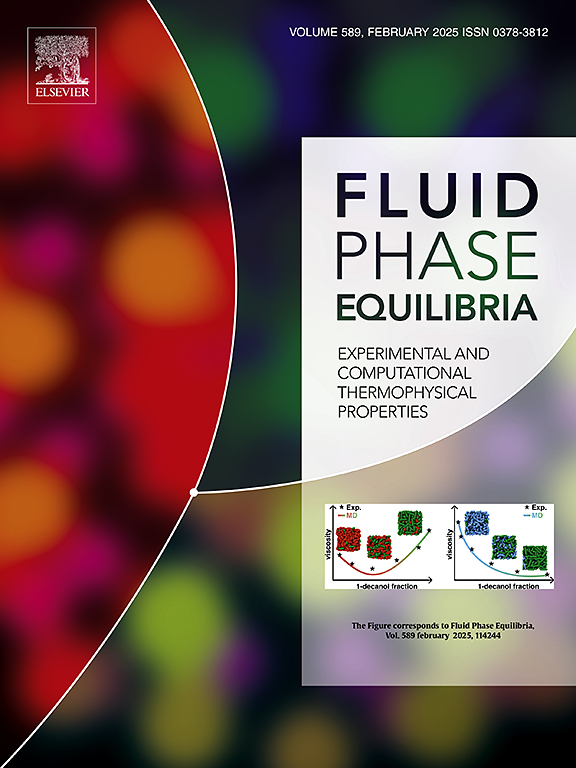The vapor pressure behavior and association of mixtures of 1-hexanol and n-hexane between 293 and 373 K
Abstract
Vapor pressure isotherms for mixtures of 1-hexanol and n-hexane determined between 293 and 373 K with the usual accuracy of ∼0.03 kPa can be described satisfactorily by the Wilson equations. The initial increase and final decrease of GmaxE with increasing temperature reveal that the thermodynamic behaviors associated with the more strongly self-associated compound methanol and with the relatively weakly self-associated compound methylamine are observed for the hexanol mixtures at the extremes of the temperature range studied. Correspondingly, the values for the Wilson coefficient λ12 — λ11 (1 = hexanol, 2 = n-hexane) as well as the values for the activity coefficients and the association energy of hexanol lie between those determined under similar conditions for methylamine and methanol. Within series of mixtures containing homologous alcohols a decrease of the difference (λ12 — λ11) — (λ12 — λ22) = λ22 — λ11 with increasing chain length reveals decreasing interaction between the alcohol molecules. A decrease of the coefficient λ12 — λ22 indicates increasing interaction between the alcohol and hexane molecules with increasing chain length. A two-constant model of association, one for dimerization and the other for formation of higher polymers, permits numerical description of the thermodynamic behavior of solutions of simple aliphatic amines, thiols and short-chain alcohols in hexane without large errors over nearly the entire composition range. Such a description is not possible for solutions of hexanol and other long-chain alcohols in hexane.

 求助内容:
求助内容: 应助结果提醒方式:
应助结果提醒方式:


